| Anmol Chemicals is the pioneer manufacturers of Vanadyl Sulfate, Pharmaceutical Excipients Food & Flavor chemicals in India. We offer Halal and Kosher Vanadyl Sulfate or Vanadyl Sulphate made in an ISO9001, ISO22000 (FSSC22000) cGMP and GLP certified facility. Our group has several manufacturing facilities spread across the world, supported by toll manufacturers and representatives in UAE, Europe, USA and has several associated manufacturing facilities spread across India. All the Information on Physics, Chemistry, Applications, Uses and Technology on Manufacture of Vanadyl Sulfate is in these pages. |
| The units have one or more of the certifications like FDA GMP, ISO 9001, ISO 22000, HACCP, REACH, Kosher & Halal |

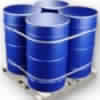
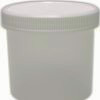
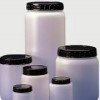
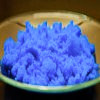
Vanadyl Sulfate or Vanadyl Sulphate SDS MSDS of Manufacturers
Vanadyl Sulfate or Vanadyl Sulphate Specifications of Manufacturers
Vanadyl Sulfate Hydrate SDS Safety Data Sheet
MSDS Sheet, Material Safety Data Sheet
1. Product Identification
Product Name & Other Names: Vanadyl Sulfate Hydrate or Vanadyl Sulphate Hydrate.
CAS No.: 27774-13-6 Anhydrous (green in color). 16229-43-9 Vanadyl sulfate pentahydrate; 12439-96-2 Vanadyl sulfate dihydrate; 16840-96-3 Vanadyl sulfate trihydrate; 27774-13-6. CAS 123334-20-3 is also used.
EINECS EC Number: 248-652-7
Molecular Weight: 163 (anhydrous)
Chemical Formula: VOSO4-XH2O
Relevant uses and uses advised against (if any): Laboratory and Industrial Manufacturing.
Suppliers: As per letterhead.
2. Hazards Identification
GHS, Globally Harmonized System Classification in accordance with 29 CFR 1910
Classification according to Regulation (EC) No 1272/2008
Acute toxicity, oral Category 4
Skin corrosion/irritation Category 2
Serious eye damage/eye irritation Category 2A
Specific target organ toxicity, single exposure; Respiratory tract irritation Category 3
Labeling according Regulation (EC) No 1272/2008
| GHS Label Elements 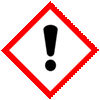 Irritant |
Signal Words: Warning
Hazard statements:
H302: Harmful if swallowed.
H315: Causes skin irritation.
H319: Causes serious eye irritation.
H335: May cause respiratory irritation.
Precautionary statements:
P262: Do not get in eyes, on skin, or on clothing.
P264: Wash skin thoroughly after handling.
P280: Wear protective gloves/protective clothing/eye protection/face protection.
P270: Do not eat, drink or smoke when using this product.
P273: Avoid release to the environment.
P330: Rinse mouth.
P362: Take off contaminated clothing and wash before reuse.
P301+312: IF SWALLOWED: Call a POISON CENTER or doctor/physician if you feel unwell.
P332+313: If skin irritation occurs: Get medical advice/attention.
P302+ P352 - IF ON SKIN: Wash with plenty of soap and water.
P305+ P351 + P338 IF IN EYES: Rinse cautiously with water for several minutes. Remove contact lenses, if present and easy to do. Continue rinsing.
P332+313: If skin irritation occurs: Get medical advice/attention.
P337+P313 If eye irritation persists: Get medical advice/ attention.
P501: Dispose of contents/container to authorized agents only.
Labeling in accordance with Directive 67/548/EEC:
Xi Irritant
R22: Harmful if swallowed.
R36/37/38: Irritating to eyes, respiratory system & skin.
3. Composition/Information on Ingredients
Product Name & Other Names: Vanadyl Sulfate Hydrate or Vanadyl Sulphate Hydrate.
CAS No.: 27774-13-6 Anhydrous (green in color). 16229-43-9 Vanadyl sulfate pentahydrate; 12439-96-2 Vanadyl sulfate dihydrate; 16840-96-3 Vanadyl sulfate trihydrate; 27774-13-6. CAS 123334-20-3 is also used.
EINECS EC Number: 248-652-7
4. First Aid Measures
Always get medical attention after the first aid is over.
Inhalation: Remove to fresh air. Give oxygen if breathing is difficult; give artificial respiration if breathing has stopped. Keep person warm and quiet; get medical attention.
Ingestion: Induce vomiting immediately if directed by medical personnel. Never give anything by mouth to an unconscious person.
Skin Contact: Immediately flush skin with plenty of soap and water for at least 15 minutes. Remove contaminated clothing and shoes. Wash clothing before reuse. Thoroughly clean shoes before reuse. Get medical attention if irritation develops.
Eye Contact: Immediately flush eyes with plenty of water for at least 15 minutes, lifting upper and lower eyelids occasionally. Get medical attention.
5. Fire Fighting Measures
Fire: Not considered to be a fire hazard.
Fire Extinguishing Media: Use water spray, alcohol-resistant foam, dry chemical or carbon dioxide.
Special hazards arising from the substance or mixture: Sulfur oxides, Vanadium Compounds.
Special Information: In the event of a fire, wear full protective clothing and NIOSH-approved self-contained breathing apparatus with full face piece.
6. Accidental Release Measures
Personal precautions, protective equipment and emergency procedures: Avoid dust formation. Avoid breathing dust/fumes/gas/mist/vapors/spray. Ensure adequate ventilation. Use individual protective equipment (waterproof boots, suitable protective clothing, safety glasses, etc.). Restrict unprotected personnel from the area. Prevent any contact with hot surfaces. Do not approach facing the wind. Do not touch the spilled material.
Environmental precautions: Do not let the product enter drains, soil or water sources.
Methods and materials used for containment Cleanup procedures and Storage: Contain spilled material. Cover with an inert, non-combustible absorbent material, (e.g. sand, earth, diatomaceous earth, vermiculite). Vacuum or sweep-up and remove to an approved disposal container.
7. Handling and Storage
Precautions for safe handling: Apply according to good manufacturing and industrial hygiene practices. Ensure proper ventilation. Wash thoroughly after handling. Do not drink, eat or smoke while handling. Avoid contact with skin, eyes and clothing. Minimize dust generation. Avoid breathing dust/fumes/gas/mist/vapors/spray. Avoid contact with eyes, skin, and clothing. Keep container tightly closed. Avoid ingestion and inhalation. Use individual protective equipment (waterproof boots, suitable protective clothing, safety glasses, etc.). Prevent any contact with hot surfaces.
Conditions for safe storage, including any incompatibilities: Store in cool, dry and ventilated area away from heat sources and protected from sunlight in tightly closed original container. Keep air contact to a minimum. Do not leave the material container open. Store protected from heat, sparks and ignition sources and incompatible materials. Avoid contact with skin and eyes. Avoid inhalation of dust/mist/vapor. Do not store with incompatible materials like strong oxidizing agents. Containers may be hazardous when empty. Further processing of solid materials may result in the formation of combustible dusts. The potential for combustible dust formation should be taken into consideration before additional processing occurs.
8. Exposure Controls/Personal Protection
Airborne Exposure Limits: Ceiling: 0.05 mg/m3 as per NIOSH IDLH
Ventilation System: In general, dilution ventilation is a satisfactory health hazard control for this substance. However, if conditions of use create discomfort to the worker, a local exhaust system should be considered.
Personal Respirators (NIOSH Approved): Not expected to require personal respirator usage. For conditions of use where exposure to dust or mist is apparent and engineering controls are not feasible, a particulate respirator (NIOSH type N95 or better filters) may be worn. If oil particles (e.g. lubricants, cutting fluids, glycerin, etc.) are present, use a NIOSH type R or P filter. For emergencies or instances where the exposure levels are not known, use a full-face positive-pressure, air-supplied respirator.
Skin Protection: Wear protective gloves and clean body-covering clothing.
Eye Protection: Use chemical safety goggles and/or full face shield where dusting or splashing of solutions is possible. Maintain eye wash fountain and quick-drench facilities in work area.
9. Physical and Chemical Properties
Appearance: Blue crystals or crystalline powder.
Odor: Odorless.
Odor threshold: Not available.
pH: Not available.
Relative density: Not available.
Boiling Point: Decomposes.
Melting Point: 105C literature.
Flash point: Not available.
Auto-ignition temperature: Not available.
Decomposition temperature: Not available.
Upper/lower flammability or explosive limits: Not available.
Vapor pressure: Not available.
Vapor density: Not available.
Evaporation rate: Not available.
Flammability (solid, gas): Not available.
Partition coefficient: n-octanol/water: Not available.
Solubility: Soluble in water.
Viscosity: Not available.
10. Stability and Reactivity
Stability: Stable under ordinary conditions of use and storage.
Hazardous Decomposition Products: May produce oxides of Sulfur and Vanadium on decomposition.
Hazardous Polymerization: Will not occur.
Incompatibilities: Strong oxidizing agents, Moisture.
Conditions to Avoid: Heat, flame, dusting and incompatibles.
11. Toxicological Information
LD50 4450 mg/kg ( Rabbit ).
Carcinogenic Effects: Not a reported carcinogen by IARC, NTP, ACGIH, OSHA.
Mutagenic Effects: Not available.
Developmental Toxicity: Not available.
Reproductive Effects: No information available.
12. Ecological Information
Toxicity: No data available
Environmental Fate: When released into the soil, this material is not expected to evaporate significantly. When released into water, this material is not expected to evaporate significantly.
Persistence and Degradability: No information available.
Mobility: Likely to be mobile due to water solubility.
Bioaccumulation/ Accumulation: Not likely to accumulate due to water solubility.
Results of PBT and vPvB assessment: No data available for assessment.
13. Disposal Considerations
Whatever cannot be saved for recovery or recycling should be managed in an appropriate and approved waste disposal facility. Processing use or contamination of this product may change the waste management options. Dispose of container and unused material in accordance with legal requirements.
14. Transport Information
DOT USA:
UN number: 2931 Class: 6.1 Packing group: II
Proper shipping name: Vanadyl sulfate.
IMDG TDG:
UN number: 2931 Class: 6.1 Packing group: II
Proper shipping name: Vanadyl sulfate.
IATA:
UN number: 2931 Class: 6.1 Packing group: II
Proper shipping name: Vanadyl sulfate.
ADR/RID:
UN number: 2931 Class: 6.1 Packing group: II
Proper shipping name: Vanadyl sulfate.
15. Regulatory Information
USA:
SARA 302 Components: No chemicals in this material are subject to the reporting requirements of SARA Title III, Section 302.
SARA 313: Listed.
SARA 311/312 Hazardous Categorization: Acute Health Hazard.
California Proposition 65: This product does not contain any Proposition 65 chemicals
16. Other Information
H302 = Harmful if swallowed.
H315 = Causes skin irritation.
H319 = Causes serious eye irritation.
H335 = May cause respiratory irritation.
Xi Irritant
R22: Harmful if swallowed.
R36/37/38: Irritating to eyes, respiratory system & skin.
Manufacturers
Anmol Chemicals
S-8, SARIFA MANSION, 2ND FLANK ROAD, CHINCHBUNDER, MUMBAI 400009, INDIA
TEL: (OFFICE) 91-22-23770100, 23726950, 23774610, 23723564. FAX: 91-22-23728264
e-mail: anmolc@mtnl.net.in

Exports to USA, Canada, UAE, Dubai, South Africa, Tanzania, Kenya, Nigeria, Egypt, Uganda, Turkey, Mexico, Brazil, Chile, Argentina, Europe Netherlands, Italy, Spain, Germany, Portugal, France, Malaysia, Indonesia, Thailand, Russia, Georgia, Norway, Korea, Japan, etc.
Copyright and Usual Disclaimer is Applicable. 23 February, 2022